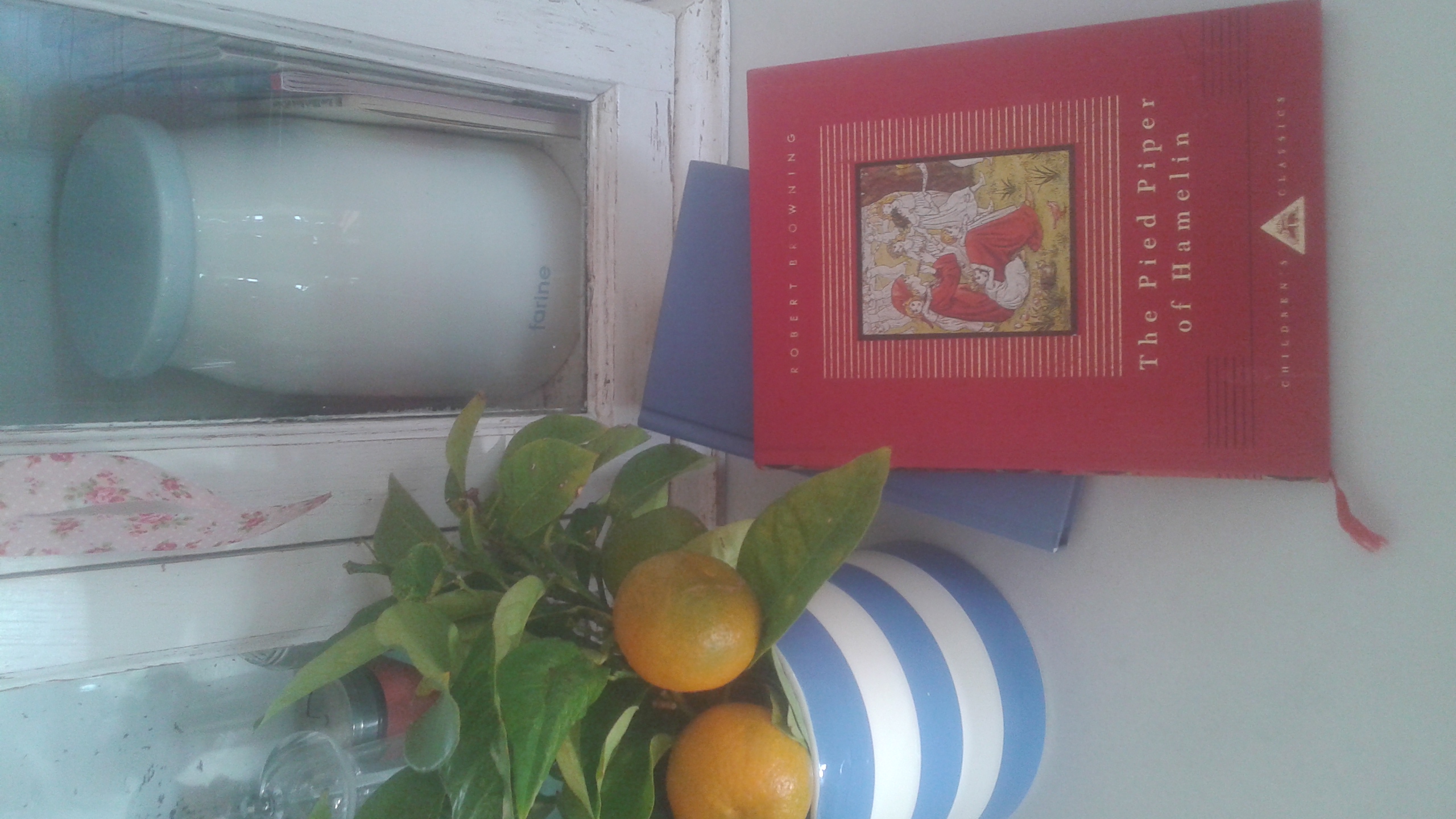Wishes, human rights, The Pied Piper of Hamelin and the “Operation Pied Piper” during WWII, meditation and journaling practices, and more wishes for the New Year and always

This is the first post of the New Year and I would like to start by wishing us all health, prosperity and many, many personal joys, within societies that more and more, each day and year, move towards more democracy, peace and respect for human life and rights for all.
Recently, I had the opportunity to have a look at the Universal Declaration of Human Rights (UDHR) / https://www.un.org/en/about-us/universal-declaration-of-human-rights. The UDHR is a significant point in the history of human rights, and “is widely recognized as having inspired, and paved the way for, the adoption of more than seventy human rights treaties, applied today on a permanent basis at global and regional levels.” It more or less provides a universal human rights framework that supports that everyone, simply by virtue of being human, deserves freedom, respect, justice, and the opportunity to live a life free from discrimination and oppression, and that all human beings should enjoy freedom of speech and belief and freedom from fear and want.
In the preamble of the UDHR it is recognized that the inherent dignity and equal and inalienable rights of all members of the human family, are the foundations of freedom, justice and peace in the world, whereas, “the disregard and contempt for human rights have resulted in barbarous acts which have outraged the conscience of mankind,” and I would add, have also generated massive levels of waste of resources, loss, physical and mental distress, and trauma and dysfunction that are passed down from one generation to another.

The second theme of today’s longish post relates to The Pied Piper of Hamelin, a fairy tale type story by Robert Browning. He wrote this poem for the entertainment of a young boy who was ill in bed, inspired by a legend that he remembered from his own childhood. It has become a children’s classic, although I think, like most fairy tales and myths, it’s suitable for adults, too, as these narratives have many levels of interpretation. I have a lovely 1993 unabridged edition of the Pied Piper poem, illustrated by Kate Greenaway. It belonged to my sister, but has been resting on my shelves for ages. Although my sister and I are quite different, we both have shared a love for books and an interest in and capacity for art since very early on, and arty books had at times travelled back and forth.
The possible historical facts and related speculations about the legend still generate a lot if interest and there are many theories around the actual facts that gave birth to the legend. The contemporary town of Hamelin held a festival in 2009 to celebrate the 725th anniversary of the disappearance of the town’s children. In one medical article, I recently read, a historical basis is proposed for the 13th-century legend of the Pied Piper. It is suggested that the children actually died in an outbreak of a disease and were buried in a common grave at the site of the legendary disappearance. The association with rats points to a rodent-borne infection.
There are various theories about the possible events that might be the basis of the legend, and some are discussed in a BBC article [https://www.bbc.com/travel/article/20200902-the-grim-truth-behind-the-pied-piper]. For instance, one theory suggests that the town’s youth were part of a migration of Germans to Eastern Europe fuelled by an economic depression. It is suggested that the Pied Piper played the role of a so-called locator or recruiter, who was responsible for organising migrations to the east and is believed to have worn colourful garments and played an instrument to attract the attention of possible settlers. Another theory refers to a 13th Century outbreak of dance fever that occurred in several places and in south of Hamelin, where a group of youths were documented as wildly gyrating as they travelled out of town, and in one chronicle it is suggested that they died shortly thereafter, having literally danced themselves to death, and those who survived were left with chronic tremors. However, others suggest that these theories “don’t explain the very particular date cited for the loss of the children, and the local sense of trauma.” Historians wonder if perhaps something happened that officials had been covering up, something so traumatic that it was transmitted orally for so long in the town’s collective memory, over decades and centuries.
At one level, The Pied Piper of Hamelin, like most fairy tales is a didactic, morality story cautioning children, and adults, to be fair and to keep their promises. The Pied Piper is a musician who can weave entrancing tunes that initially mesmerize the rats that have infested the town, driving them to their death. However, once the mayor and the other dignitaries refuse to pay him for his service he plays a tune that entrances almost every child in the town. The children as if in a hypnotic state merrily follow him to the edge of the town, where they disappear into a mountain, never to be seen again.
However, this fairy tale is not the usual tale with a positive resolution, where good prevails and justice is served or where our hero or heroine after many trials defeats the various dragons and finds happiness. As a child the ending of the story left a trace of sadness. The separation of the children from their families and mothers seemed wrong and cruel and unfair and I didn’t really see how this was fit punishment for the mayor’s dishonest behaviour. I was too young to know that actually in the real world things often work like that. Take war for instance, where often innocent people and children suffer due to decisions made by forces beyond them. There is also the issue of the town people being complicit or apathetic to the decisions of the authorities, but I didn’t know that either. My attention was captured by the loss of the parentless children and the childless parents, for the loss of one’s caregivers is a child’s biggest fear.
Even though I was a child I also felt that a place with no children would be a very grim place, indeed. Farley [read below] provides an extract from Murrow & Davis (1941), to describe this feeling invoked after the evacuation of children during World war II: “It’s dull in London now that the children are gone. For six days I’ve not heard a child’s voice. And that’s a strange feeling. No youngster shouting their way home from school. And that’s the way it is in most of Europe’s big cities now. One needs the eloquence of the ancients to convey the full meaning of it. There just aren’t any more children.” There are many historical events throughout time involving the mass migration of children or the removal of children from their families for a variety of reasons. Currently, the death toll of children in Gaza brings all this to the foreground. On November 23rd, The Human Rights Watch released a report saying that since October 7, one child in Gaza has been killed every 10 minutes on average and an estimated 5,500 children had by thet point been killed in Gaza, and hundreds more were reported missing and may be trapped under the rubble. A week ago The Guardian reported 8,000 deaths of children, and numbers are still rising. An important point is made in an article in the UNICEF website: “The cost to children and their communities of this violence will be borne out for generations to come” [https://www.unicef.org/emergencies/children-gaza-need-lifesaving-support].
Additionally, as with most myths and fairy tales its interest also lies in its symbolic resonance with the psyche or the mind. Exploring fairy tales at this level awakens us to both outer and inner realities. In some sense fairy tales put us to sleep when we are young, but the same stories have the capacity to awaken us as adults. What might the mayor, the piper, the rats, the children, the town and townspeople represent in our psyche and to what extent are these qualities present in us? It has been suggested that the rats might represent the darker side of our human nature like greed, malice, cruelty and dishonesty or disowned instincts and aspects of self. The children might represent our inner children or all the younger parts of ourself , the ones that hold our traumas and the ones that hold our joy and talents, buried and hidden in the cave of our subconscious. Perhaps the tale cautions us that a price is to be paid when we banish or suppress and deny aspects of our psyche, both the painful experiences and our potential and aspirations.
There are many questions to be asked if one wanted to engage in an interesting exploration: What do the rats symbolize in the outer world or in certain cultures? What do they symbolize in our inner worlds? What does the disappearance of the children into the cave represent in our psyche? What do the mayor and the Pied Piper represent both in the external world and in our psychic space? Could the mayor symbolize authority and power gone awry? Who might be playing a mesmerizing tune for us and where might it be leading us? Is the Pied Piper good or bad or both? Does he represent death? Could the Pied Piper be anything or anyone that can manipulate, control or lock up aspects of our psyche? Might the Piper be an internalized censor figure or someone leading us astray? Could he be the gatekeeper of younger aspects of our psyche? What does the cave or mountain represent? Could the mountain be the subconscious and all that is buried or not easily available to our conscious mind?
Finally, I came across an interesting article by Lisa Farley. In her article with the title: ‘OPERATION PIED PIPER’: A PSYCHOANALYTIC NARRATIVE OF AUTHORITY IN A TIME OF WAR I learned that the massive evacuation of British children during World War II was actually named “Operation Pied Piper.” Farley writes that the evacuation was considered “the most carefully planned logistical operation affecting children which the world has ever witnessed” (Lowndes, 1969, cited in Gartner, 2010). However, the evaluation of the scheme and its implementation despite its goal to save lives has not been all positive and contemporary studies offer evidence of the evacuation’s failures, which was “not envisaged as a social, but simply military question.” It was controversial from the start, and even though the children were successfully evacuated, the price was a large-scale emotional trauma and disruption. Former evacuees have offered oral testimony and autobiography about the effects of the evacuation on their lives and there are hundreds of testimonies that include experiences of abuse and abandonment. The psychoanalyst Anna Freud found that London children were less upset by bombing than by evacuation to the country as a protection against it.
Farley writes that the legendary name, ‘Operation Pied Piper’, which hints at themes of betrayal, loss and ambivalent leadership, seems to offer an apt commentary on the underside of the evacuation; however, she notes the question of the allegorical significance of its title has so far being surprisingly untouched. She refers to D. W. Winnicott, an important figure of child psychiatry and psychoanalysis, who argued for an increased sensitivity to children, and his wife Clare Britton, social worker and psychoanalyst, who both turned their attention to the problem of authority becase on the one hand, Freud had just died, and on the other hand, leadership had gone terribly wrong under Hitler’s dictatorship.
Apart from the more known messages of this tale Farley suggests that it was “another of the legend’s motifs – on following a charismatic leader – that got invoked in the ominous context of World War II.” She refers to an image of ‘The Crazy Piper’ that appeared in newspapers in 1934. It featured a swastika-clad musician leading a group of Hitler youth to an anti-Semitic tune of total destruction. She also writes that Erich Weinert invoked the question of the ‘piper’ in his 1941 poem ‘Hitler’s Nightsong,’ in which the rats are not dancing to the piper’s tune as the writer wanted to address the counter-dictatorship melody to soldiers with a view to convincing them to abandon their position behind German lines. Farley writes that Weinert seemed to be asking: what if the soldiers responsible for actualizing Hitler’s hatred ‘no longer danced’ to his dictatorial tune? Could they then begin to listen to an internal moral compass that opposed the regime?
However, she adds that missing from the anti-Nazi piper accounts is a more terrible historical truth because as the legend goes, it was not only the mayor, but also the townspeople who were implicated. Their implication was that of apathy, of standing by. She explains that the question of the bystander could not be represented in the years after the war, but in 2003 Hannah Arendt posited that the fixation on an evil leader, and no reference to the idle masses wards off the question of “personal responsibility under dictatorship” for instance. Additionally, Mieder (2007, cited in Farley) suggests that the emphasis on a vindictive piper served an important psychological function because it offered the townspeople of Hamelin a scapegoat because in blaming the piper, only ‘a little guilt’ needed to be attributed to the local authorities and the townspeople.
Farley clarifies that the British evacuation of children worked on totally different terms from the context of Hitler’s final solution, and the aim of the British operation was to save lives, but she suggests that the official code name of the rescue mission, ‘Operation Pied Piper’, reveals more, and this is supported by two key surveys of the evacuation, which expressed misgivings about the event from the start. Both surveys highlighted the event’s failures not only in terms of its ‘routine organization’, but also the breakdown of ‘personal relationships’, as in the context of the evacuation, a child’s worst fears and fantasies became terribly literal. She claims that held in its code name were worries about the losses that would inevitably be incurred in the rescue effort, and which many child workers, Britton and Winnicott among them, dared to speak out loud. They not only focused on the effects of the separation on children, but Winnicott also asked about what the evacuation did to caregivers and parents.
British analysts like Isaacs, Winnicott, and others, Farley writes, seemed to be asking: “what unspoken meanings – such as loss, betrayal and abandonment – are held within the evacuation’s legendary namesake? What cannot be spoken in what is officially being said?” Winnicott also focused on the dynamics of authority. In his 1941 broadcast, ‘On influencing and being influenced’, Winnicott urged listeners not to confuse thinking with compliance to authority. Farley writes: “For him, thinking was an act of courage that resisted ‘defensive subservience’: which he described as ‘a holding open of the mouth with the eyes shut, or a swallowing whole without critical inspection.”
 I would also like to include some exercises and tools for those who might be interested in engaging with them.
I would also like to include some exercises and tools for those who might be interested in engaging with them.
A guided meditation practice called Radical Acceptance of Pain from Tara Brach’s book. I think the exercise could be useful for physical pain, but also emotional distress:
“Find a comfortable position, sitting or lying down. Take a few moments to become still, relaxing with the natural rhythm of the breath. Gently scan through your body, relaxing your brow and jaw, dropping your shoulders and softening through your hands. Try not to create any unnecessary tension in your body. Where is the area of strong discomfort or pain that calls your attention? Bring a receptive attention directly to the unpleasant sensations in that part of your body. Notice what happens as you begin to be present with this pain. Is there an attempt, however subtle, to push the pain away?……. Is there fear? You might notice how the body and mind clench like a fist in an attempt to resist pain. Let your intention be to remain present, allowing the unpleasant sensations to be as they are. Soften any reaction against the pain, allowing the fist of resistance to unclench and open………..
What is the experience actually like? Do you feel burning, aching, twisting, throbbing, tearing, stabbing? Does the pain feel like a knot, a constricting band? Does the area feel as if it is being pressed down or crushed by a great weight? Are the unpleasant sensations diffuse or focused in their intensity? How do they change as you observe them?
Investigate with a nonreactive, soft attention. Allow the sensations you may feel as a solid block of pain to unfold and move in their natural dance of change. When resistance arises, relax again, reestablishing a sense of openness. Be aware of your entire body, including the areas that aren’t painful. Let the body become like open space, with plenty of room for unpleasant sensations to arise and dissolve, fade and intensify, move and change. No holding, no tension. Inhabit the sea of awareness, and let any painful sensations float in an accepting openness. Try not to judge yourself for reacting when pain feels like too much…… Take care of yourself in whatever way provides ease and comfort. Over time if you practice mindful presence of pain for even a few moments at a time, equanimity will increase. You will be able to more readily let go of resistance and open to unpleasant sensations.”
Two journaling ideas:
There are many ways to journal and myriads of questions and prompts one can use to glean insight and clarity or process experience. Maybe for the end of the year and the beginning of a new one we might like to engage with a more appreciative inquiry and chose to focus on the positive, both in terms of what we have achieved so far and what we might be grateful for in the moment, as means to both bring contentment and clarity, but also empowerment and a renewed sense of agency. There are many resources and ideas in books related to these two themes or types of journaling and reflection practices that one can look up.
For the first theme we might focus on or recall past moments of agency or milestone achievements, perhaps moments in our life like birth of children, graduations and degrees, important relationships, putting kids through college, the building of houses, businesses and careers, creative endeavors, and so on, but also, small things like planting a tree or a small garden, rescuing a stray animal or going out of our way to help someone or kindle and support someone’s aspirations. The exercise will remind us of the difficult things we’ve managed to complete and see through or the things that brought us to our knees and yet we managed to somehow live through, or things that required some level of courage, sacrifice and sustained effort over years and even decades.
To refer to slivers of my own experiences, working sixty hour weeks and building a business while being a mother to a very young child, and taking care of family, pets and home without many resources required a lot of that. Returning to studying in my forties took some fortitude and lots of effort and perseverance. Rescuing and taking care of stray animals has warmed my heart, brought me joy, and also required processing of many losses. Maintaining this website is another kind of lengthy process that has required resourcefulness and sustained effort and courage, and also making the choice to put up with push back in many forms. The art that I have “churned out”, the 762 posts and other things I have written, translated and posted here have not only required countless hours and much effort, but also moving through the physical discomfort that arose for a long while, the walls of censorship and the anticipation of bad behaviour from others. I’ve kept going for several reasons, two being the urgency to express myself through art and writing, and my strong belief in human rights, democracy and freedom of expression and being for all.
Engaging with this exercise might remind us of our many good intentions, care, love and effort that have gone into living that many of us often forget, as we tend to focus on what has not turned out as we hoped. It will also bring the bigger picture and the contexts we’ve inhabited into the foreground, and a realization that even though the years go by quickly, each year in itself contains a lot of living, a lot of caring about and caring for others, a lot of effort, and a lot of small or more important things done. It will remind us of the roads we’ve taken and the places we’ve been and the many people that have crossed our path.
This kind of exercise will most likely bring up regrets and thwarted or unrealized dreams, but experiences are seen within broader lens that include circumstances, odds stacked against us to a greater or lesser degree, levels of agency and survival pressures, levels of knowing and ignorance or naiveté. It will definitely bring up warm feelings of nostalgia and even awe, and it can help us lovingly embrace our life and younger selves. Moreover, it can remind us to be more appreciative of our journey and help us disentangle the good and wholesome of past experiences from the parallel dynamics that might have undermined, coloured or eroded these same experiences. Finally, it will most likely increase our sense of self worth and compassion for self and others. The fact that we are still here, despite and in spite of it all, might also come into sight.
Gratitude journaling is a simpler and more straightforward activity, but not unrelated to the above. With both exercises we can also free-associate, which might bring up some surprising information. We can focus on what we’re grateful for in our lives right now, what we’re grateful for about the past, like things that happened or things we pursued or fought for. Finally, our gratitude practice can have a future orientation. This involves reflecting on the things we would be grateful for in the future, which can help clarify desires or put things into perspective. I tend to focus on gratitude frequently throughout the day as a practice. It comes more naturally, and it frees up space for me to journal on other things, but writing allows for more insight to emerge and a broader sense of gratitude to arise.

Finally, I will end today’s piece with more wishes. This is an extract from one of the meditations provided in Tara Brach’s book. It’s in the first person, but we may wish this both for ourselves and for others:
May I (you) be filled with lovingkindness; may I (you) be held in lovingkindness. May I (you) accept myself just as I am. May I (you) be happy. May I (you) touch great and natural peace. May I (you) know the natural joy of being alive. May my (your) heart and mind awaken; may I (you) be free.
